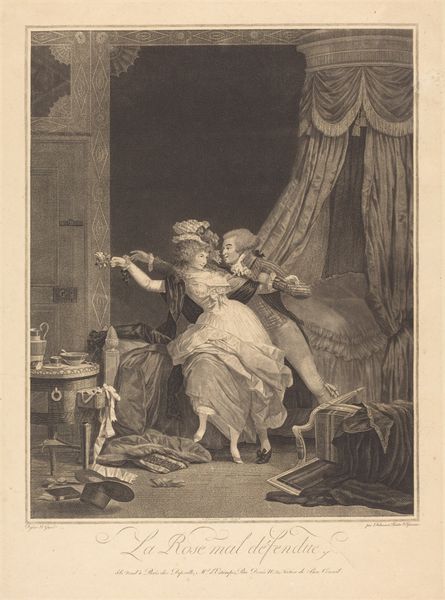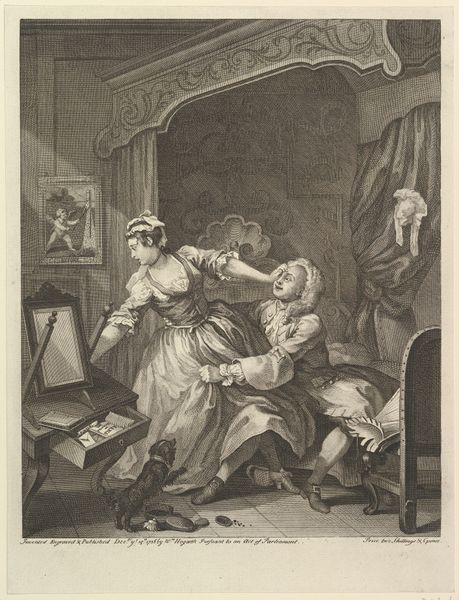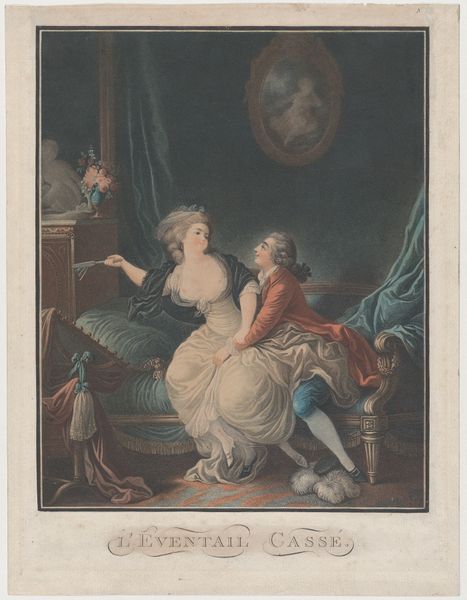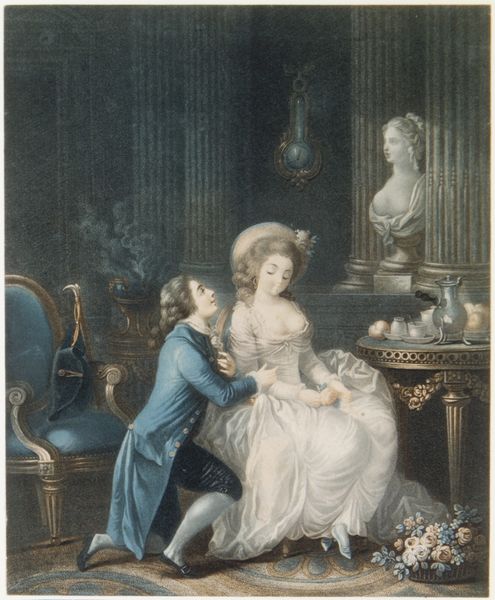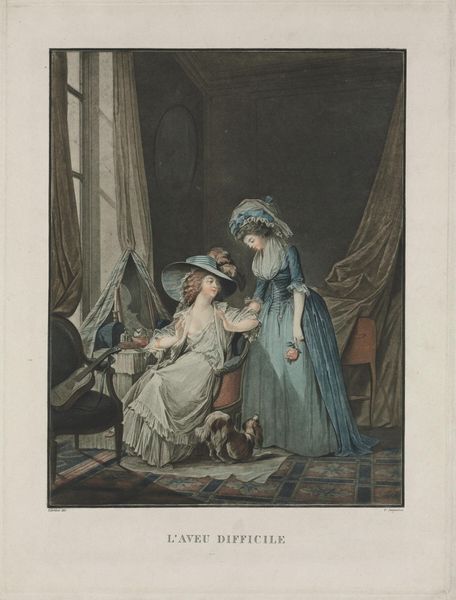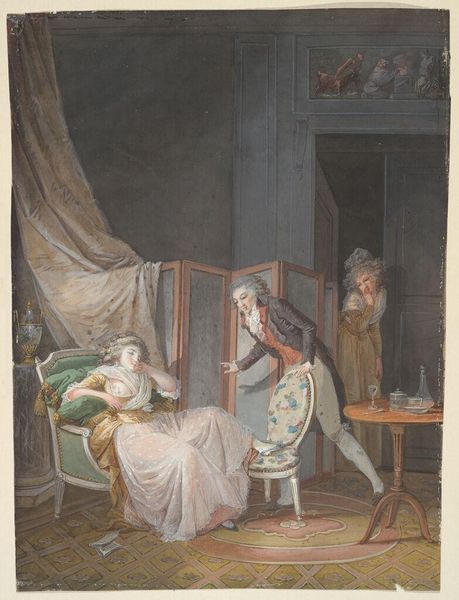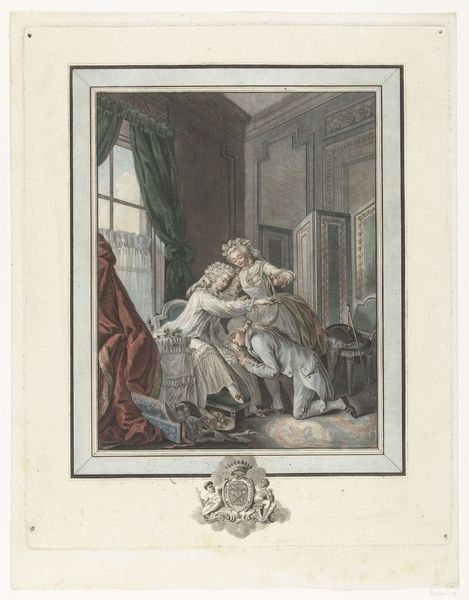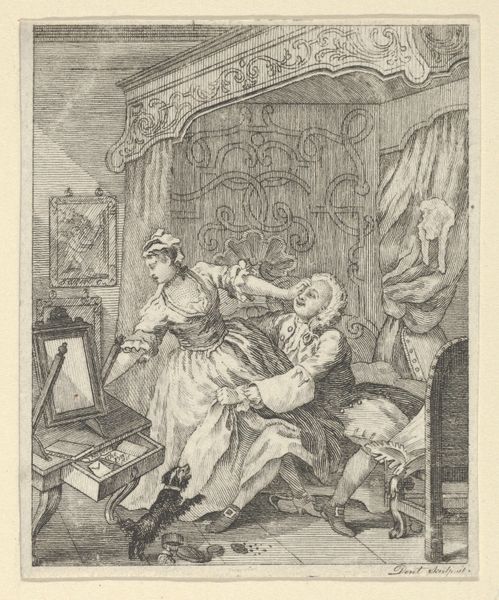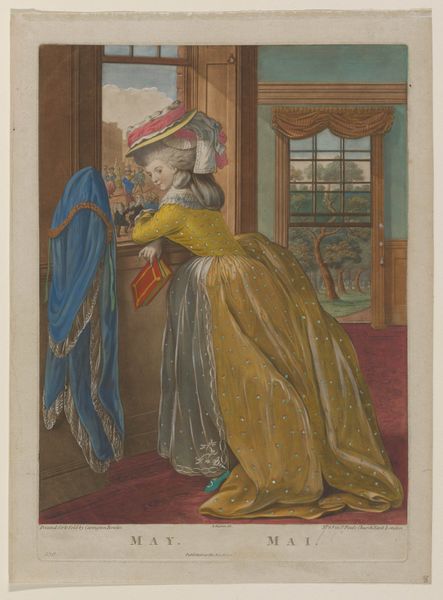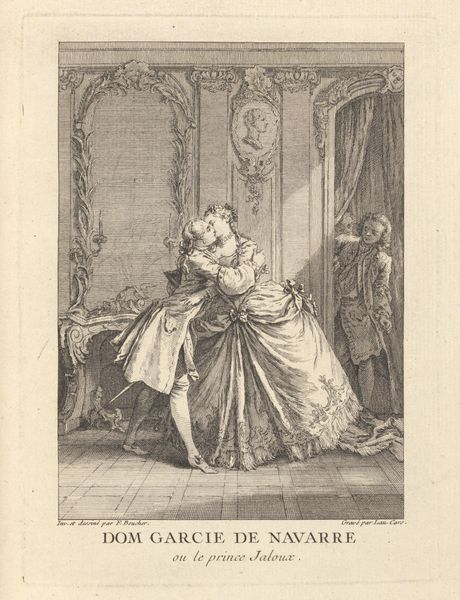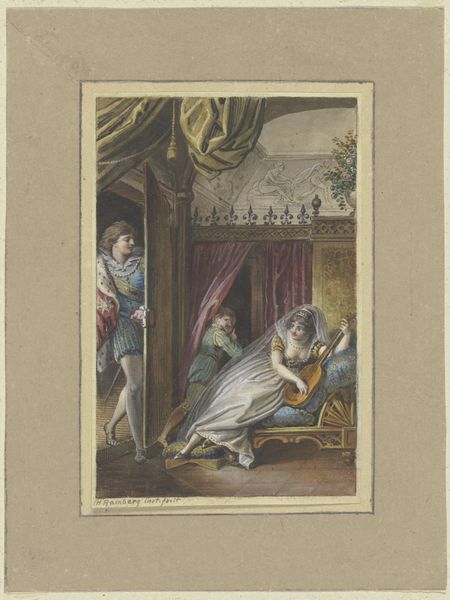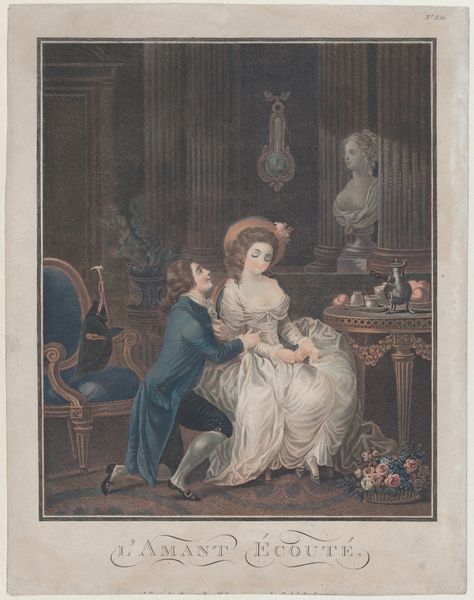
Copyright: National Gallery of Art: CC0 1.0
Editor: We're looking at "La Rose mal defendue" by Louis Philibert Debucourt, created in 1791. It's a print, likely using watercolor. The scene feels… well, playfully charged. The figures are so close. What catches your eye about the composition and structure of this piece? Curator: The immediate draw lies in the dynamism created through diagonal lines. Notice how the figures’ bodies lean and pull in opposite directions, creating a sense of movement and instability. Consider the textural contrasts. The crisp lines defining the man’s jacket play against the softer, almost cloud-like treatment of the woman’s dress. How does the artist’s handling of line contribute to the narrative? Editor: That’s interesting, I hadn't noticed how active the lines are. What is the relationship between color and subject matter here? Curator: Debucourt uses a limited, almost pastel palette – primarily blues, pinks, and creams. This lightness in color contributes to the overall rococo aesthetic and enhances the suggestion of intimacy. The careful modelling of these colors helps to define form. Note how light catches the folds of the woman’s dress, creating volume and drawing attention to the figures. Would you agree that color is doing more than just describing form? Editor: Absolutely. The softness of the colors definitely reinforces that sense of intimacy you mentioned. It’s interesting to analyze it purely in terms of line, color, and form without considering the narrative. Curator: Precisely. While understanding the scene's social implications can be fruitful, focusing on the formal relationships reveals how the artwork functions on a purely visual and sensual level. The relationship between surface and subject is also central. The artist is acutely attuned to the dynamics within this context. Editor: Thank you; looking at the formal components helps me appreciate the technical skill, beyond just the immediate impression. Curator: It underscores the idea that meaning resides within the careful articulation of form itself. Analyzing those connections helps cultivate a richer dialogue with art.
Comments
No comments
Be the first to comment and join the conversation on the ultimate creative platform.
